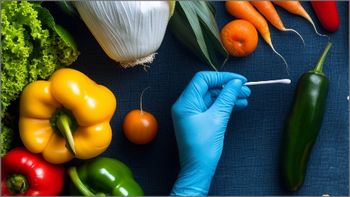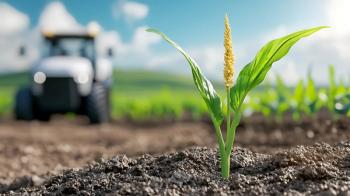
Determining Aflatoxins in Food Samples During Sample Preparation
Aflatoxins are a family of toxins made by certain fungi that are found on agricultural crops, such as maize (corn), peanuts, and cottonseed.
Scientists from the Henan University of Technology in Zhengzhou, China recently reviewed emerging extraction medium-based sample preparation for the determination of aflatoxins in food samples. Their findings were published in the Journal of Chromatography A (1).
Mycotoxins are naturally occurring secondary metabolites that are produced by filamentous fungi. They are among the most common natural food contaminants, with the United Nations Food and Agriculture Organization claiming that up to 25% of crops in different parts of the world are contaminated with mycotoxins such as the highly toxic aflatoxins (AFs) B1, B2, G1, and G2 produced by Aspergillus flavus and other parasitic Aspergillus fungi (1). Mycotoxins occurring in food have been linked to long-term effects on health, including cancer induction and immune deficiency (2).
AFs are a family of toxins made by certain fungi that are found on agricultural crops, such as maize (corn), peanuts, and cottonseed. People can be exposed to them by eating contaminated plant products, consuming meat or dairy products from animals that ate contaminated feed, or inhaling dust generated while handing contaminated crops and feeds (3). AFs have been recognized as primary groups of carcinogens, and due to the complicated nature of food matrices, trace AF presence, and their precursors in food, sample preparation is essential for accurate and sensitive determination. This can prove challenging for the food safety analysis industry. To minimize the effects of complex matrices and increase the sensitivity and accuracy of trace AFs and precursor detection, it is important to choose a suitable extraction medium and sample preparation technique in different instances.
In this study, the scientists reviewed recent advances made in sample preparation based on emerging extraction media for determining AFs and their precursors in different food samples. This includes ionic liquids (ILs) and IL-based composites, metal-organic frameworks (MOFs) and covalent organic frameworks (COFs). Extraction media can be combined with various sample preparation techniques, such as dispersive liquid-liquid microextraction (DLLME), solid-phase extraction (SPE), and magnetic/dispersive solid-phase extraction (MSPE/DSPE). What approach works best mainly depends on the extraction media’s physicochemical properties.
Due to advantages such as easy functionalization, tunable structures, chemical stability and some unique physical properties, ILs and IL-based composites, MOFs and COFs are considered as promising alternative extraction solvents/adsorbents for the extraction, enrichment and purification of target analytes in different food matrices. Immobilizing extraction media on magnetic supports or complexing them with other functional molecules can enhance their extraction and purification performance. Further, based on different physicochemical properties of extraction media and the differences in food matrices, various extraction techniques can be combined to achieve simple, rapid, and efficient sample preparations of AFs and their precursors.
Advancements have been made on researching ILs and IL-based composites, MOFs and COFs-based sample preparation for determination of AFs and their precursors in food matrices. This type of development can prove an effective strategy for improving extraction selectivity and reduce matrix effects. With further research, scientists can make full use of these approaches’ properties.
References
(1) Li, J.; Xu, X.; Cui, X.; Sun, Y.; Song, C.; et al. A Recent Overview of the Application of Emerging Extraction Medium-Based Sample Preparation for the Determination of Aflatoxins and Their Precursors in Food Samples. J. Chromatogr. A. 2025, 1743, 465678. DOI:
(2) Mycotoxins. World Health Organization 2023.
(3) Aflatoxins. National Cancer Institute 2024.
Newsletter
Join the global community of analytical scientists who trust LCGC for insights on the latest techniques, trends, and expert solutions in chromatography.




